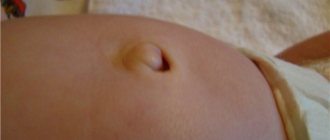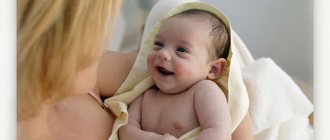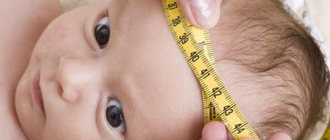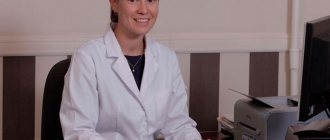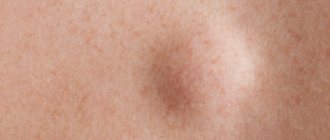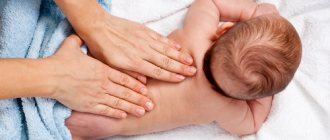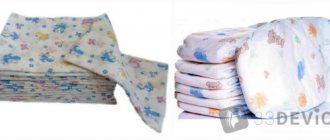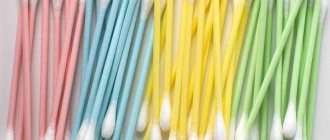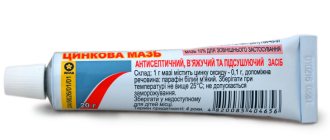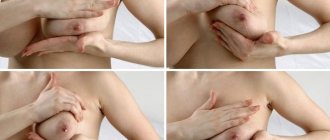Newborns are beautiful! Little bundles of happiness that were born recently. Caring for them becomes the meaning of life for loving parents.
Often after birth, babies develop hair on their heads. Some babies are born with a baby tooth right away.
Genetic roulette also plays such tricks: some babies have vegetation on their backs or other parts of their bodies from birth.
This is not a pathology; rather, it is a feature of which very soon there will be no trace left.
For parents, any discrepancy with the model of a healthy baby is a reason for panic.
Bristles in children are not at all uncommon; they do not harm the life and health of the child. With the right approach, you can handle the bristles.
Bristles in newborns: photo
The baby's skin is very soft and delicate thanks to a light layer of hair that is almost invisible.
During the growth process, a few weeks after birth, in the area of the shoulders and back, some babies may feel coarser hairs that begin to prick like stubble.
The easiest way to identify the problem is during bathing. The skin is steamed and the manifestation of causticity is most noticeable.
The bristles of newborns look different from those of an adult. To identify the problem, you need to know what stubble looks like and what it is like in individual cases.
To accurately determine the problem, you can look at photos in medical reference books.
What a baby's bristles might look like:
- With light hair, stubble may not be visually detectable, but problem areas can be identified by redness. Redness is the result of inflammation of the hair follicles due to contact with other surfaces.
- When there are no visible reasons (the hairs are too small), the presence or absence of a problem is determined by the behavior of the baby. If the baby cries and fidgets during sleep, lying on his back or side, then stubble causes discomfort.
- The hairs are long and dark and can be seen visually or by touch. It is enough to run your hand over the areas of the skin where hairs are visible. In problem areas, pellets or stumps may appear.
Each case is individual and it is impossible to derive an exact algorithm for identifying the problem. Parents need to carefully look at the behavior and condition of the baby’s skin.
Stages and degrees
The manifestation of tickle symptoms in newborns occurs gradually as the disease develops. In this regard, this dermatological disease is divided into several main stages.
Stage 1
At stage 1 of the development of the disease, the first signs of abnormal development of the baby’s hair are detected. Upon detailed examination of the child, you can see that in the subcutaneous layer there are multiple black dots, which are actually small hairs growing from the follicles.
The top layer of the epidermis still retains a smooth surface and is soft. The child behaves calmly and without signs of sudden changes in mood.
Stage 2
At stage 2 of tickle, signs of local skin irritation appear. Rough black stubble partially overcomes the surface layer of the epidermis, causing negative reactions in the body.
The child often begins to be capricious, cries, and has an unstable psycho-emotional state. Without taking appropriate response measures, the further condition of the newborn only worsens, and the amount of coarsened hair gradually increases.
Stage 3
At stage 3 of the development of the disease, abundant bristling of the baby’s skin is observed. A visual examination reveals thick male-type stubble, which in most cases has a rich black color. Abnormal hair development may affect the back, outer thighs, and shoulders.
Tickler in children under a dermatoscope
Much less often, pathology occurs on the surface of the chest and abdomen. Due to the fact that a large number of prickly hairs constantly irritate the skin, the child may develop signs of local inflammatory processes.
What causes stubble in a newborn?
Worried parents usually have a question about where the hard hair brush on the little body of the baby came from.
Is it possible to remove coarse hair tufts? It is worth first finding out the reason, and then talking about further actions.
What happens from:
- A few months after birth, the cause of hair loss may become coarser.
- The cessation of hair formation in the womb, which is due to the normal evolutionary development of the baby.
- Problems with the functioning of the pores or sebaceous glands in areas of the skin that most often come into contact with other surfaces.
The first two cases are the most common and do not cause discomfort to the baby. The latter indicates violations.
Note! Usually, already in the maternity hospital, specialists identify stubble and determine the cause of its origin.
Any of the options can occur at any stage of the baby’s growth. Only a pediatrician can give a more precise definition.
Causes of bristles
To date, the reason for the appearance of hard hairs in some babies has not been established. But it has been definitely proven that the bristles are not pathological and do not threaten the life of the baby. Medical experts have been arguing for many years and cannot come to a definite answer: what causes the appearance of coarse hair on a baby’s body?
In all children, the bristles vary in severity and location
There are 2 theories of the appearance of stubble: 1 Most experts say that stubble in children appears due to poor functioning of the sebaceous glands , i.e. clumping of the secretions of the sebaceous glands, as a result of which the natural fluff on the baby’s body rolls off.
An excessive amount of secreted fat leads to a coarsening of the fluff, which causes discomfort to the baby when lying down, and subsequent blockage of the pores causes irritation and inflammation. This theory looks quite plausible: the sebaceous glands were blocked, and after some time the resulting plug came out.
Tikhonov A.S., pediatrician, Children's Clinic SM-Doctor, Moscow
If a child has fuzz on his back, he needs to find a more comfortable position to reduce discomfort. For example, periodically place the baby on his stomach.
Of course, it is unsafe to leave the baby alone in this position, so someone should be with him at all times. And, of course, we must not forget about steaming the skin and softening the hairs.
2 The second version is the result of the evolutionary process, a sign of atavism . In other words, hard hairs appear in the womb of almost every baby, but closer to childbirth they turn into light, barely noticeable fluff.
There are cases when the disappearance of coarse hairs occurs a little later - bristles in infants can be observed for up to three months. But over time it goes away on its own.
Almost all pediatricians agreed on one opinion: the bristles do not pose a threat to the baby’s health and should go away on their own over time. Read about caring for a newborn in the first month of life here.
How to identify bristles on the back?
No specialist can definitely advise parents on how to identify bristles on the back. It is impossible to visually examine the dense hairs on a baby’s skin.
There are certain symptoms according to which you can determine the presence of stubble on the back of a baby. Sometimes several symptoms are present at the same time, making diagnosis easier.
Signs of a problem:
- Restlessness while lying on back.
- The appearance of pellets at the location of the problem.
- Small black dots where coarse hairs grow.
- Tactile definition is less common.
- Redness, which indicates an inflammatory process.
It is impossible to determine the presence of stubble on a baby’s back using other methods.
If one of the symptoms is present, but the hairs are not visible visually, then you can use a magnifying glass and seek help from specialists.
What is a poker in babies?
If you turn to healers for an explanation of the concept, then usually young mothers will find the following version: a poker is hair that cannot grow through the skin of the baby’s back.
Moreover, according to popular legend, this hair is quite hard (stubble), and that is why it causes significant inconvenience to the child - the baby cannot sleep peacefully on his back, he turns around, and often cries in his sleep. It’s interesting that you can’t just see the bristles - you need to first perform certain manipulations, which we’ll talk about in detail below.
According to healers, it’s also not worth hoping that hair will grow back on its own sooner or later. The hairs will continue to grow under the skin, bending more and more and taking the shape of the very poker after which the mysterious bristle is named. The baby's thin skin is bothered by constant tingling sensations, and he will cry from these unpleasant sensations, without resting himself and without giving his mother rest.
This is how traditional healers talk about the disease; professional pediatricians have their own explanation for the pathology.
How to remove using folk remedies
Traditional medicine does not define stubble on a baby’s body as a disease that requires treatment. Then, parents turn to folk methods and remedies for help.
Note! Before using a folk remedy, you should make sure that it will not harm the baby’s health.
It is advisable not to resort to extreme methods and means. At home, treatment can negatively affect the condition of the baby’s skin.
Remove with folk remedies:
| Folk method | How to withdraw |
| Roll out the bristles with yeast dough | Knead yeast dough based on milk and honey. After bathing, roll out the problem area with dough for 10 minutes a day. Complete healing will require 8 sessions |
| Wrapping with black bread | A thin flat cake is formed from the crumb of black bread. Breast milk is used to soften bread. Place the cake on the problem area and wrap the area in a diaper. Bathe the baby and then remove the crumb |
| Night compress | Steam the baby in a bathhouse, spread the body with rich cream and wrap it in a piece of gauze. Leave the material overnight and carefully remove it in the morning. Treat the skin with body lotion or baby cream |
Diagnostics
Tickle in newborns is a disease that can be diagnosed by a pediatrician or pediatric dermatologist. The examination procedure begins with an external examination of the child. Then the doctor uses instrumental research methods that allow us to study the deep layers of the skin.
Using a dermatoscope, the doctor assesses the condition of the follicles that produce the child’s atypical hair. After determining the fact of bristling of the upper layer of the epidermis, the doctor determines the causes of this disease, which can be clarified during a conversation with the baby’s parents.
Upon completion of this diagnostic stage, a further treatment regimen is formed. If concomitant symptoms are detected in the form of scratching, local inflammation, skin infection, allergic reaction, capillary blood donation from a finger and morning urine may be prescribed.
These biological materials are tested for general clinical and biochemical parameters.
Pediatricians' opinion
The presence of stubble in a newborn or one-month-old baby is in no way considered a pathology or abnormality.
Any doctor will confirm this. Experts say that the appearance of coarse hair in some children is a manifestation of evolution.
Komarovsky claims that this manifestation of hair growth on the baby’s body does not require attention at all - over time, the discomfort will disappear, but for now the baby can sleep on his tummy.
General recommendations from pediatricians:
- Check the general health of the baby.
- Reduce contact of the problem area with other surfaces.
- Monitor the condition of the stubble.
There is no need to treat stubble. It is impossible to get rid of the problem using radical methods within the framework of medicine.
Is it possible to get rid of it with medications?
No pills have been invented to get rid of stubble. The problem can be solved using more radical methods, but leading pediatricians do not advise: the hairs will fall out on their own.
There are no children whose excess hair lingers for a long time.
To alleviate the condition, place the baby on his tummy more often, giving the itchy back a rest. Observe, do not touch with dirty hands. You should generally wash your hands when touching your baby.
Important! If the hairs do not cause much concern, do not touch them. They will fall out on their own as the baby grows.
It is worth resorting to rolling out if the baby is bothered by itching. Redness may occur at the site of hair formation.
If a rash appears after rolling out or other procedures, rinse the skin with water and apply a thin layer of cream against allergies and rashes in children.
There are many of them, choose the one that your pediatrician recommends. Bipanten cream has good reviews.
What do the doctor's say?
Traditional medicine categorically rejects the existence of a “poker”; you will not find such a term in any authoritative medical source. But everyone heard it and most likely guessed what it was about. From a medical point of view, we are talking about lanugo - the very first hairs that appear in the fetus during its intrauterine development.
As soon as hair follicles are formed, they begin to work: fine and bleached hair grows. At 12 weeks of pregnancy, lanugo growth begins and continues until approximately 28 weeks. By this time, the baby's body is almost completely covered with hair.
Lanugo is a genetic memory from distant ancestors, a kind of atavism. But, if you look closely at the development of a baby, starting from the state of a fertilized egg, you can understand that in a few months he goes through the evolutionary path that humanity has been going through for hundreds of thousands of years. Tail, gills, fur - all this is inherent in the human baby during its intrauterine development.
The baby needs lanugo as protection. While its skin is very thin and subcutaneous fat has not yet formed, lanugo reliably retains the layer of vernix that covers its body. As subcutaneous fat grows, the need for lanugo disappears, and the process of getting rid of it begins. Hair falls out in the womb, most often the process ends 2-3 weeks before birth. But it happens that a baby is born with remnants of lanugo, this is especially common in premature babies.
The hair itself does not bother the child, does not affect his condition and development in any way, and after about two weeks there is no trace left of the blond lanugo hair. But it is after this that the process of replacing vellus hair with real hair, which grows over the entire area of the skin of absolutely every person, may be somewhat disrupted. Delayed and protracted natural loss of lanugo sometimes disrupts the functioning of hair follicles. This is the only more or less reasonable explanation for the appearance of “bristles” in infants.
This condition is not considered a disease, and there is no recommended treatment for it.
Symptoms
The baby may show signs indicating not only the presence of hair, which the mother may not have noticed yet, but also that its presence spoils the baby’s life, causing discomfort and even pain. Therefore, it is important to consult a doctor in such cases in a timely manner.
These are the signs:
- The little one cries “bitter tears” and becomes irritable.
- The baby loses his appetite and begins to act up.
- The child does not sleep well, both during the day and at night. He often wakes up and is mopey.
- In the “lying on his back” position, he begins to arch, and may even cry.
Why are bristles dangerous?
Contrary to its scary name, the poker does not directly pose any serious dangers. But this disease prevents the child from sleeping, deprives him of proper rest, and therefore indirectly affects the mental and physical development of the baby.
Also, this disease can seriously affect the nervous system of the baby’s mother and her fragile state of health after a recent birth. This can provoke loss of breast milk and exacerbation of chronic diseases.
Opinion of medical specialists
Pediatricians reject the possibility of such a disease in a child as a poker. But even they cannot help but admit that sometimes children in the first month of life experience strange formations on the skin.
The crust will fall off on its own with proper child hygiene. The baby's skin should be regularly steamed in warm water, and then lubricated with baby cream.
Sometimes the baby's mother may mistake rolled lanugo for bristles when the baby sweats or stays in one position for a long time. Simple regular hygiene can help in this situation.
Possible complications
Many pediatricians and pediatric dermatologists are inclined to believe that tickling does not require the use of drug therapy, and the rough hair will disappear on its own as the child develops.
At the same time, the lack of treatment for the disease can lead to the following complications:
- the appearance of scratches on the skin, into which bacterial, viral and fungal microorganisms can enter, causing an acute inflammatory process and suppuration of the wound;
- development of a local allergic reaction with the appearance of redness, swelling, itching and rash;
- disruption of the child’s sleep or complete refusal to eat, which are caused by constant irritation emanating from the stubble of coarse hair;
- further expansion of the boundaries of the area of the upper layer of the epidermis, which has signs of tickling.
Tickle in newborns is a non-dangerous dermatological disease that reduces the child’s quality of life, provokes the effect of local irritation, disrupts the baby’s sleep, and causes an unstable psycho-emotional state.
The appearance of stubble can be caused by failure to comply with basic hygiene standards, the body's protective reaction to external stimuli, or be of a hereditary nature. The cause of the pathological condition of epithelial tissues is determined by the results of a diagnostic examination of the child and a conversation between the doctor and the baby’s parents.
